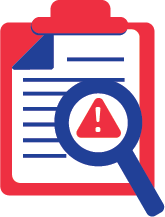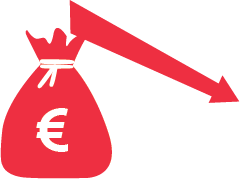Digital Noon Report - the first step to working with vessel data
Shipping operations involve a number of varying parameters and derivatives, each having an influential role in performance, efficiency, and sustainability. Therefore, it becomes crucial to monitor all variable sets of data of a voyage. The noon report does that errand
Shipping operations involve a number of varying parameters and derivatives, each having an influential role in performance, efficiency, and sustainability. Therefore, it becomes crucial for the crew members on board, ship operators, shore personnel, and ship owners to record and monitor all variable sets of data of a particular voyage. The noon report does that errand.
It is a report prepared by the Chief Engineer on-board with the assistance of a deck officer, which is further sent to shore personnel by the master on a daily basis. A typical noon report incorporates the following details:
- Name, voyage number, date, and time of the report.
- Position of the ship fetched through Automatic Identification System (AIS) onboard
- Average Speed since last noon report
- Propeller Revolution since last noon report
- Average RPM of the engines
- Direction and Force of Wind
- General Sea and Swell Conditions at the time of preparing noon report
- Distance from the Next Destination Port
- Estimated time of Arrival (ETA) to the next Port of Call
- ROB (Remaining Onboard Chart)- prepared by Chief Engineer onboard to keep track of fuel oil/ lube oil/water on the ship.
There are constant inputs of a huge number of variable data onboard through noon reports which are meant to serve various purposes:
- The data on noon reports form the basis of calculating voyage profitability, the Energy Efficiency Operational Indicator, and vessel performance. Moreover, it is also used by the shipping companies for monitoring and analyzing the performance of two sister ships which induces an ecosystem for technical improvements.
- Noon Reports keep track of consumption of fuel oil/lube oil/ water and help to plan port bunkering and operations for both crew members and shore personnel accordingly.
- As the noon reports carry data on the cargoes carried, distance from the next port of call, and ETA it assists port authorities for efficient stowage plans, the passage of the ship, and other modalities.
Why is it essential to fill out the noon report?
What are the possibilities of a digital noon report?

For decades, noon reports have served as the ultimate source for all data inputs related to vessel performance. Accurate speed and consumption models owe an influential part in the commercial aspect of shipping operations.
Let us know why noon reports are not enough for shipping operations:
Digital Noon reports, in their entirety, are a more credible source for shipping operations. Digital Noon reports are prepared with the help of AIS, collecting real-time data from the sensors, and integrating the same with weather reports to generate a more viable performance indicator.
Let us know why digital noon reports are a better option:
Let us know why noon reports are not enough for shipping operations:
- Low-resolution data.
- Prone to errors due to a variety of sensors exposed to poor maintenance, operational ambiguity, and dependent on crew members' credibility.
- Uncertainty of data due to factors neglected in traditional reports- environmental effects, engine degradation, etc.
Digital Noon reports, in their entirety, are a more credible source for shipping operations. Digital Noon reports are prepared with the help of AIS, collecting real-time data from the sensors, and integrating the same with weather reports to generate a more viable performance indicator.
Let us know why digital noon reports are a better option:
- High-frequency sampling.
- Access to more data than noon reports.
- Noon reports data took hours to collate while digital reports auto-feed the data. Moreover, it also produces instantaneous reports on various sets which aid for predictive maintenance.
- Research at Hellenic Institute of Marine Technology comparing 162 Noon reports and equivalent 4016 Continuous Monitoring Records concluded that NR data provide less statistically reliable results than those of the CMS.
- In a study conducted by University College London and Hyundai Heavy Industries, the results showed noon report-based speed and consumption curves to be 15-20% less accurate than continuous monitoring reporting.
- In the HHI study, noon-reported weather was erroneously reported 68% of the time when compared to National Oceanic and Atmospheric Administration (NOAA) Hindcast Data in BF4.
Digital noon reports give us a more reliable set of data that acts as a true basis for performance metrics citing real-time factors, weather conditions, engine and equipment's conditions independent of any exposure to human error. Hence, it could be of great use in:
1. Vessel Performance Analysis
2. Inspection, surveys and predictive maintenance.
3. Can be utilised for technologies like Digital Twin, Fuel Optimisation Technology etc for inducing more efficiency to the fleet.
4. Managing a range of operations both onboard and shore- bunkering, chartering, stowage plans, lng operations etc.
1. Vessel Performance Analysis
2. Inspection, surveys and predictive maintenance.
3. Can be utilised for technologies like Digital Twin, Fuel Optimisation Technology etc for inducing more efficiency to the fleet.
4. Managing a range of operations both onboard and shore- bunkering, chartering, stowage plans, lng operations etc.
Let us know more of companies that provide digital noon reports and have revolutionised the way to report voyage:
1. Marine Digital Noon-report is a part of Weather routing and voyage optimization system - SaaS solution for shipping companies, shipowners and freight forwarders, that need to know the current status of the voyage, vessel performance metrics and to predict the time of arrival of the ship at the pilot station with high accuracy.
The Voyage module of Marine Digital Fuel Optimization System gives digital noon reports, performance analysis and environmental reporting. The voyage module facilitates:
Based on noon-reports and satellite data and thanks to the modern algorithms for building routes Marine Digital provides the possibility for calculating ETA taking into account weather conditions & sea conditions, vessel performance metrics and IMO reporting data.Fleet Managers can make use of the Voyage Optimization to plan and assist the vessel to arrive on time and be safe at the same time.
1. Marine Digital Noon-report is a part of Weather routing and voyage optimization system - SaaS solution for shipping companies, shipowners and freight forwarders, that need to know the current status of the voyage, vessel performance metrics and to predict the time of arrival of the ship at the pilot station with high accuracy.
The Voyage module of Marine Digital Fuel Optimization System gives digital noon reports, performance analysis and environmental reporting. The voyage module facilitates:
- Generation of digital noon reports.
- Voyage planning taking into account the weather conditions.
- Fuel optimization based on ETA, laycan and other operational factors.
- Recommends RPM to achieve maximum power output and minimum ghg emissions.
- Vessel fuel performance analysis, and reporting e.g. Energy Efficiency.
- Environmental reporting - all data needed and automatically calculated for IMO reporting.
- Built-in Business Intelligence Dashboards track real-time voyage against estimated results based on data
Based on noon-reports and satellite data and thanks to the modern algorithms for building routes Marine Digital provides the possibility for calculating ETA taking into account weather conditions & sea conditions, vessel performance metrics and IMO reporting data.Fleet Managers can make use of the Voyage Optimization to plan and assist the vessel to arrive on time and be safe at the same time.

Get free test access with a description of the solution

2. Kongsberg - Kongsberg Fleet Management Software system electronic tool for handling memos, sharing information and experience within the organization with an option to share the same to relevant third parties. It includes various modules- Purchasing, Budget, Maintenance, Voyage, Experience and Shipweb
S-routing offers many services which are as follows:
- Produces unbiased and accurate reports.
- Induces commercial viability by optimizing voyage considering vessel and voyage-specific severe motion alerts based on vessel size, draft, stability, speed, heading and sea conditions.
- Fuel optimization based on ETA, laycan and other operational factors.
- Recommends RPM to achieve maximum power output and minimum ghg emissions.
- Generation of digital noon reports.
- Voyage planning with registration of ports and berths.
- Trend reports, user-defined reports.
- Exporting of data in desirable format and customizable mailing format.
- Daily transfer to shore-based main office.
- Environmental reporting- vessel fuel performance analysis, and reporting e.g. Energy Efficiency Operational Index (EEOI), reports on emission of NOX SOX CO2 etc, calculation of consumed chemicals, and accounting of discharges to land and sea from vessel and fleet.
- Other modules facilitate planned maintenance, inventory control, import and export of data, budget and supply management on ship.
3. StormGeo - Comprising three modules- s-planner, s-insights, s-routing; StormGeo's s-suite promises to deliver cost efficiencies by optimizing voyage performance through integrating voyage planning, route optimization, route advisory services and fleet management
It is a better option for it:
- Gives better data visibility and provides information of real time stoppages at sea, deviation from ordered speed, real-time boiler consumption, and real time generator configuration.
- Allows users to view the entire fleet functioning with historical, real-time,and forecasted wind and cut overlay. It helps in improving fleet and team performance.
- As per its clients, it takes 1 week to realise the results in performance after maintenance whereas it takes over 5 months to realise the same based on the noon reports. Helps clients to look into ROI of efficiency upgrades based on data.
- The Data platform is adaptable to any data source- home grown system, OEM Hardware and any software platform.
- Synthesize and Contextualise information by integrating the data with weather, charts, market rates etc. Helps users to optimize voyages by hitting ETAs, RPM recommendations etc.
- Also adaptable for LNG operations
4. Nautilus Labs - Nautilus Labs has come up with an innovative technology 'Nautilus Platform' to generate accurate real time, historic and predictive insights form the high resolution data from the ship sensors or any third party data transmission sources.
5. Veson Nautical - Veson Nautical delivers centralized workspace for automated voyage data collection, insight into fleet performance and digital voyage/noon reports through its Veson IMOS Platform
- The platform facilitates streamlining vessel and voyage data collection through standard vessel forms which eliminates error and duplicate entry and helps in increasing operational efficiency.
- Built-in Business Intelligence Dashboards track real-time voyage against estimated results based on data.
- Automatically updates noon reports and other voyage forms across the concerned parties.
- Apart from the noon reports and associated operations, Veson IMOS platform is of great help in chartering, burnkering, port operations, voyage and fleet management, crew and shore management, manage financials, analytics with inbuilt Business Intelligence dashboard, contextual and real-time data management, barging, lightering, claims, LNG Operations etc.
- Strong cloud based system with industry standard security, SQL based data backup strategy with an option of offsite backup and disaster recovery services.
Leave your email to get a FREE overview of how Digital Noon Report helps to generate the data required for IMO reporting.
Moreover, you will get FREE access to the Marine Digital Noon Report for 2 months by signing LOI + NDA!
Moreover, you will get FREE access to the Marine Digital Noon Report for 2 months by signing LOI + NDA!



TOP 5 factors contributing to lower fuel costs for Shipping companies
Get a presentation with a full description of the features and free pilot project with trial of Marine Digital FOS for 2 months
"Clicking the button, you consent to the processing of personal data and agree to the privacy policy"

Get an overview "The Pathway to Zero Carbon Shipping:
IMO Compliance and CII Optimization through SEEMP" on email and download it for FREE! Leave your email now!
"Clicking the button, you consent to the processing of personal data and agree to the privacy policy, as well as consent to subscribe to the newsletter. "
Аdvantage of Fuel Optimization System from Marine Digital:

Marine Digital FOS can be integrated with other system and third-party's solutions through the API. To implement vessel performance monitoring for any vessel, we are using mathematical algorithms, machine learning and the same equipment as in FOS. The more data we collect from vessels, the more precise reports and recommendations our system will perform according to your individual requirements in fleet management.
If you have any questions about the solutions and the Marine Digital System platform, write to us, we will be happy to answer
If you have any questions about the solutions and the Marine Digital System platform, write to us, we will be happy to answer

Increased business process speed

Reducing to zero the number of errors

Best offer to the clients

Reduction in operating expenses
Have a questions?




